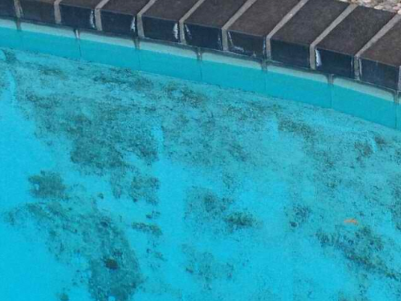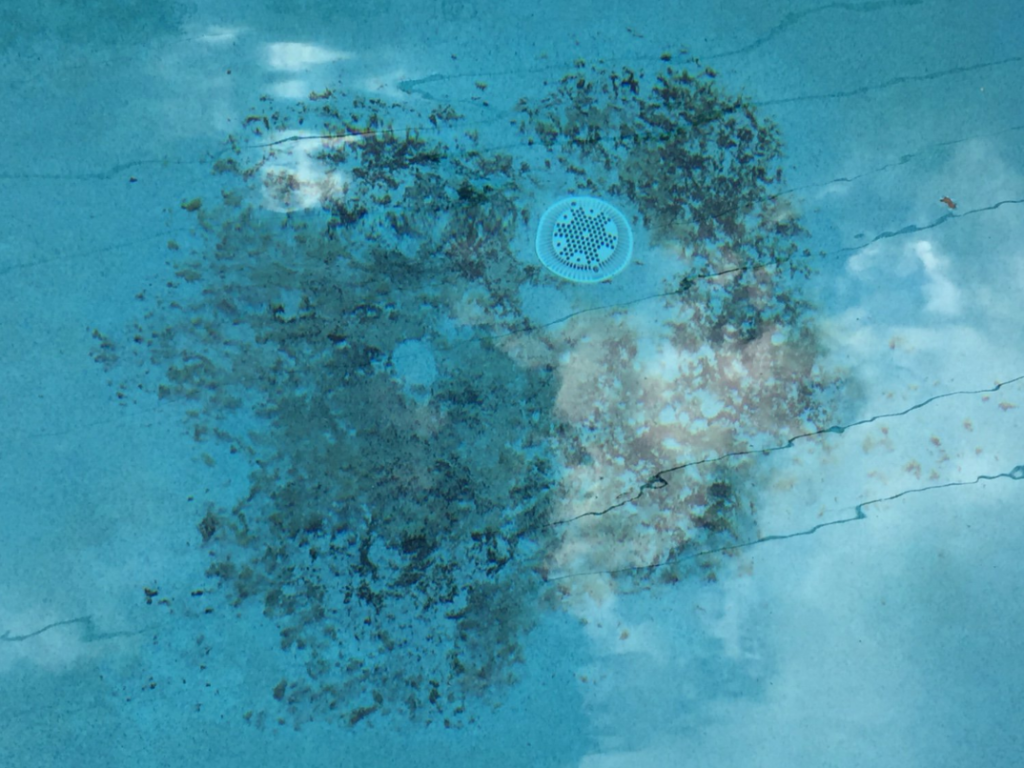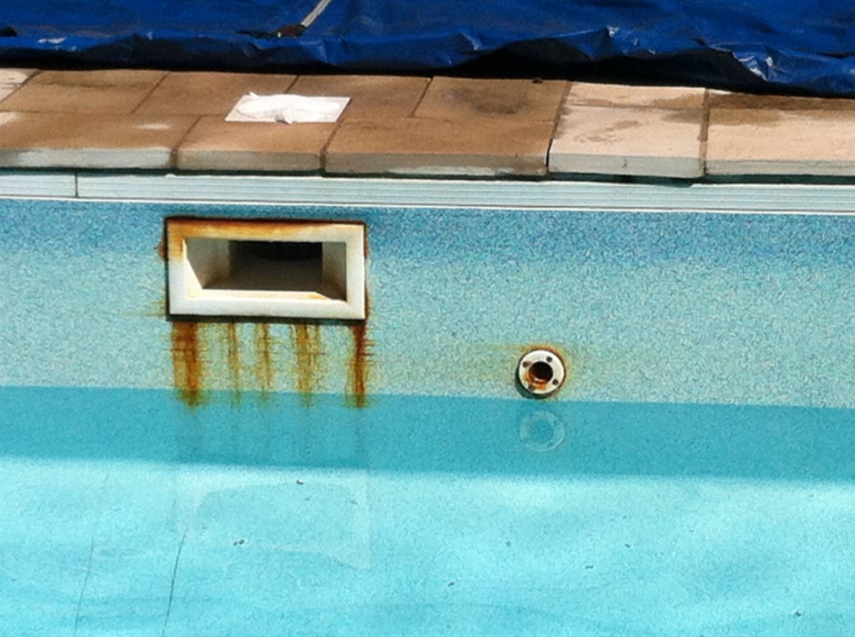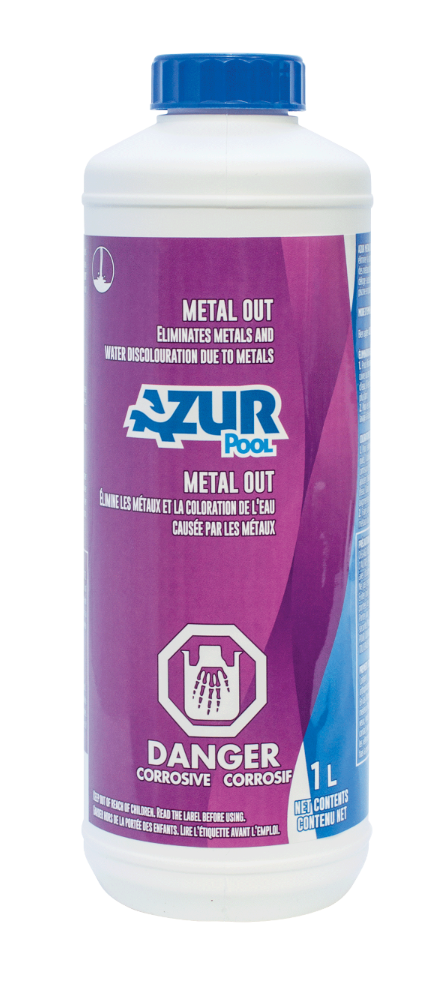
There are many types of pool stains and it is important to know exactly what type is in your pool in order to get rid of them.
Whether on the surface of the liner, on the steps or around the water return, there are solutions!
There are 4 possible causes of pool stains.
- Presence of metals;
- Leaves in the bottom of the pool;
- Poor water balance;
- A metal object in the pool.
We will see the solution to each of these problems.
Presence of metals
The presence of metals such as iron, copper or manganese will sooner or later cause stains on the pool surface. Most of the time it is the walls and the bottom that are affected, but sometimes also the steps.
- Metals can come from well water (if you have used a well to fill the pool);
- Metals can come from the addition of a copper sulphate product (Crystal Plus or Crystalline H2O sold at pool centres and
hardware stores). This product is sold as a water clarifier. We suggest that you never use this type of product in your pool or spa. - If your pool is equipped with a water heater and the heating element is made of copper (gas or propane water heater), it is possible that
the element will disintegrate and disperse in your pool. - The presence of metals, combined with a disinfectant such as chlorine, will stain the bottom and walls of the pool and may even colour the
water.
If a water test detects the presence of metals, simply use METAL OUT by pouring 300 mL per 10,000 litres of water directly into the pool water.
Presence of leaves
The presence of leaves over a long period of time will inevitably stain the bottom of your pool, whether it is concrete or liner covered. It is important to make sure that when the water freezes in winter, that it is clear and that there are no leaves at the bottom of the pool.
We suggest that you put a winter cover on your pool to avoid leaves in the spring.
Here is an example of stains caused by leaves:

Poor water balance
Sometimes during the winter, stains form on steps and around the water return. Both are usually white and plastic. The stains form, but you can’t see them because the water is acidic. Acidic water (low pH, low Total Alkalinity and low Calcium Hardness) will often mask the presence of stains.
When the pool thaws in the spring and a water sample is brought to the pool center, there is a strong possibility that you will be told to adjust the Alkalinity and Hardness upwards.
Once at home, you will put the amount of Alkalinity and Calcium that the store has suggested and will be surprised to see the steps and backflows suddenly turn yellow in seconds, as in the picture.

By adjusting the water parameters, you have just revealed the stains that were masked by the acidity of the water. These stains are often referred to as “water balance stains”.
A metal object in the pool
If someone accidentally drops a metal object at the bottom of the pool, such as a nail or screw, it will eventually stain the bottom of the pool if it is not removed quickly.
The metal object will be attacked by the presence of chlorine, which will slowly break it down. You will therefore observe a rust stain around the object. The longer you wait before removing the object, the more the stain will spread.
Here is an example of a metal screw used in a swimming pool.

*In a swimming pool, you must always use stainless steel screws.

